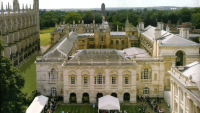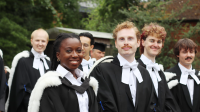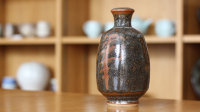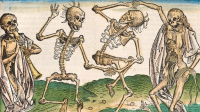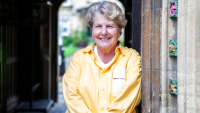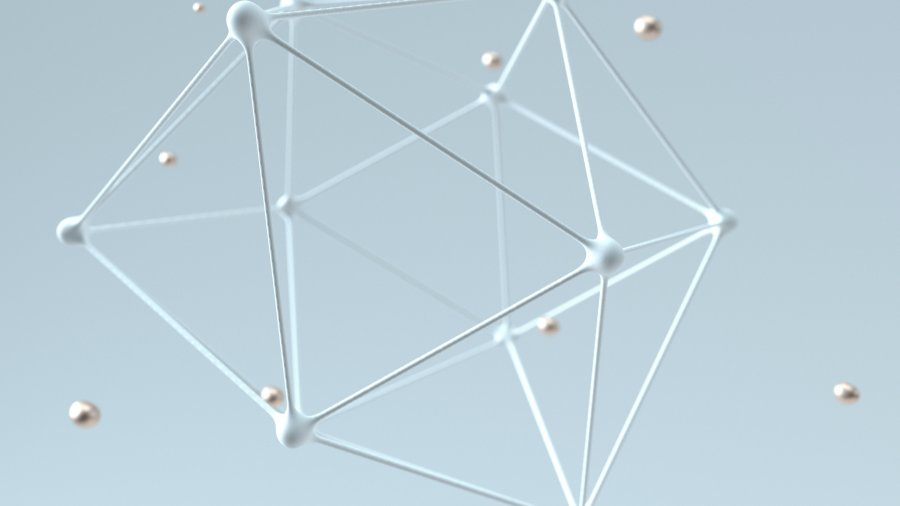
Overview
Join the Science Society for their exciting new Science Student Research Series.
Each event features short talks given by current Wolfson PhD students, covering a wide range of topics targeted at a general audience.
The talks are only 20 minutes long (including question time) and offer students a chance to share the research with the Wolfson community and beyond.
Talks
How stiff is the spinal cord and why do we care?
Julia Becker, Department of Physiology, Development and Neuroscience
Cells not only respond to chemical cues but also to the mechanical properties of the environment they live in. Nerve cells, for example, show a different growth behaviour on soft versus stiff substrates. In this talk, I’ll introduce atomic force microscopy as a method to measure the stiffness of biological samples and discuss how physiological biological changes, such as age, and pathological alterations, such as spinal cord injury and a mouse model of ALS, affect spinal cord tissue stiffness. Our eventual goal is to determine whether pharmacologically correcting pathological tissue stiffness alterations could hold promise for therapeutic intervention in the future.
Holographic Quantum Gravity and Emergent Spacetime
Rifath Kahn, Department of Applied Mathematics and Theoretical Physics, Relativity and Gravitation research group
In quantum gravity, the notion of space and time is not fundamental and emerges from a quantum field theory living on the boundary. This means all of the information present in a room is in some sense also present in the walls of that room. We will discuss how the interior of a region emerges from this information present in the boundary.
The Dark Side of the Spine: Interfacing with the Body using Electricity
Ben Woodington, Bioelectronics, Opto.Bio
Implantable bioelectronic devices for diagnosing and treating disease are emerging in modern healthcare. Within this field of therapy, the spinal cord offers an interesting target as the primary bi-directional information highway between the brain and the rest of the body. There remains several technical and clinical barriers within the development of new tools to interface with the central nervous system (CNS). Overcoming these barriers could improve the lives of people suffering from conditions such as Parkinson's1, chronic pain2, and paralysis3 as well enabling better neuroscientific research, diagnostics, and prognostics.
Our group develops thin, flexible, and shape adaptive implants based on the conductive polymer PEDOT:PSS which can be used to interface with the CNS. The devices are fabricated from biocompatible materials such as parylene-C/silicone and use conductive metals and polymers to stimulate and sense the tracks of the spinal cord. These devices are fabricated using scalable manufacturing techniques to create conformable interfaces up to 100 times thinner than commercially available devices. This allows larger coverage than previously possible, whilst minimizing surgical risk during implantation. To validate the surgical implantation of these devices they have been tested within a human cadaver model, with utility-based studies explored in vivo.
After showing our technology can be used as a minimally invasive interface for conventional spinal cord stimulation4, we are now aiming to elucidate the ‘dark’ side of the spinal cord, where the majority of motor information lies. Taking these recording devices 360° around the spinal cord, has proven to be a fascinating tool in describing the spatial and temporal arrangements of spinal networks and may offer therapeutic benefits in both prognostics and SCI therapy.
Details
This is a hybrid event, which will take place in-person in the Gatsby Room (Chancellor's Centre) and also on Zoom.
If you would like to attend online, please register for the Zoom link.
For the in-person audience, drinks and snacks will be available after the talk.
The Science Society organises regular talks spanning a wide range of topics on Fridays during term time.
